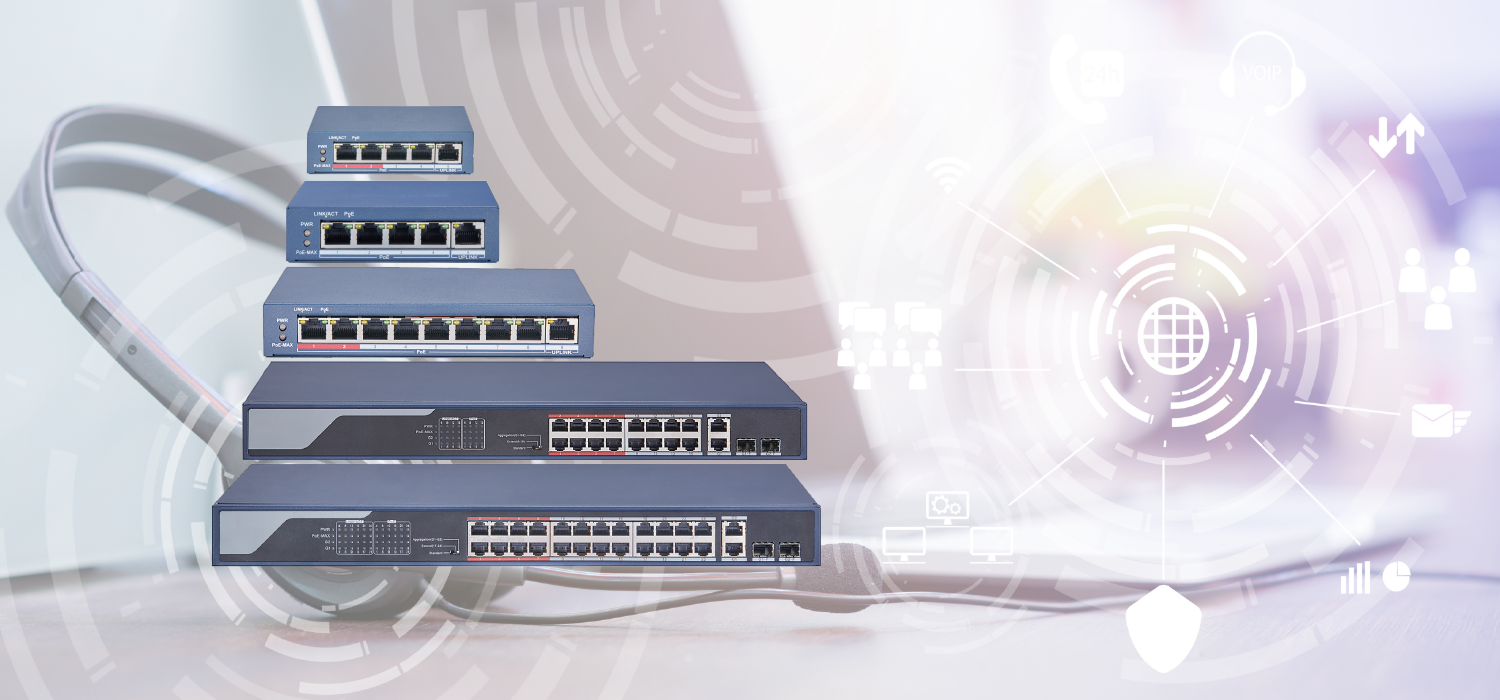
Everything You Need to Know about PoE
What is PoE?
PoE has gained wide usage in the field of IP security camera installation. One Ethernet cable to each camera, and you get power and network. It works smart and it's super efficient.
What is PoE? It's shortened for Power over Ethernet. It refers to the process of using built-in wires in an Ethernet cable to run electricity and network data. You can use PoE to power your devices and/or connect devices to your network with just one Ethernet cable.
This post will explain in detail how PoE works technically, and how to make use of its power for security cameras. Acknowledging certain limitations of PoE, we will also provide tips on how to overcome its limitations.
How Does PoE Work?
Before the invention of PoE, an IP security camera requires two things to work properly ----- power supply and local network. It needs power to be functional, and network to communicate with its network video recorder or enable user to manage the camera setting. That is to say, an IP camera needs two cables, one for power and the other for network, to be functional. That sounds easy right? But what happens when you have 8 cameras? Running two cables for each will require you 16 cables, and setting them up would be quite expensive and time consuming.

Now with PoE, you can forget about power supply and connect just one Ethernet cable from your standard PoE switch and run an Ethernet cable to your IP security camera. Once your camera is plugged in, it will instantly get the power needed to be functional and data from your network. No matter how many ports your PoE switch has, the plugging process is the same. You can see how PoE makes installing IP cameras so much easier and cheaper.

So how exactly does it work?
Well, inside the Ethernet cable, there are four twisted pairs of wires. Two of these pairs enable PoE to transmit power, and the rest two pairs transmit network data.

PoE Switch at a Glance
Now let's take a closer look at the PoE switch. Below is a 8-port PoE switch with one uplink port, which connects your switch to network devices or a router. This network layer 2 100M PoE switch supports Ethernet PoE power supply and extend mode. The power supply distance reaches as long as 250m. Each individual port on this switch can output to maximum 30 Watts, so technically the whole system should output a total of 240 Watts, but not every camera is going to need the full 30 Watts. Most standard fixed lens IP cameras take only 6 or 7 Watts of power. You can connect all eight cameras to the switch and still not max out your power system.

Besides this 8-port long-range PoE switch, Aukoo also carries 4-port, 16-port, and 24-port PoE switches. These are sufficient for majority of the video surveillance applications.
Even though PoE switch makes IP security camera installations much cheaper and easier, there are limitations, too. When scenarios require the data signal to travel long distance, the two twisted pairs end up transmitting less and less data due to resistance. They usually work fine under 300 feet. But if you need data transmission more longer than 300 feet, you will need to use the 'extend mode." It is a switch on the PoE switch that switches the maximum distance from standard to extended, so that your Ethernet cable can run more than double the distance. The downside is that your network speed will drop from 100Mbps to approximately 10Mbps. But don't worry, unless you have a few 12MP cameras connected to the switch, the speed drop wouldn't affect you too much.
Hopefully you have learned one thing or two about PoE out of this post. If you did, feel free to leave us a comment down below what you think. Do you currently us PoE switches? Have you encountered any problems? Or do you have any practical tips you would love to share with us in terms of IP camera installation.

Leave a comment